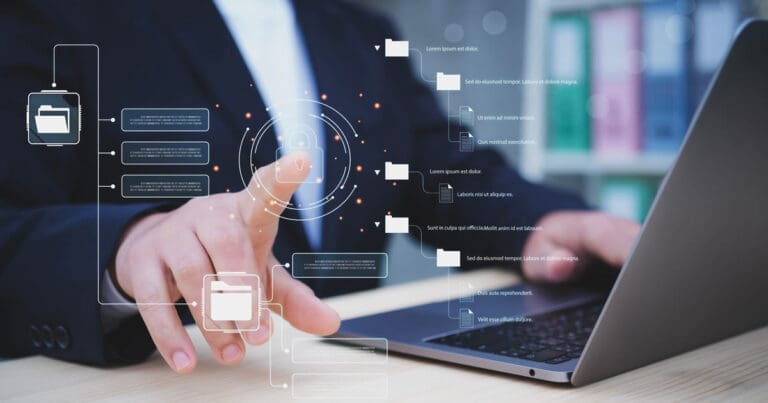How to Leverage Predictive Analytics: Benefits and Roles to Hire

Predictive analytics is quickly becoming an essential tool for modern sales and marketing teams.
As businesses strive to understand their customers better, predictive analytics is playing a larger role in helping them reach that goal.
With the right team in place, it can be easy to harness this powerful technology and use it to make smarter decisions about customer engagement, product promotion, and more.
Explore how to leverage predictive analytics for sales and marketing and identify the roles to hire if your business wants to capitalize on this technology.
What is predictive analytics?
Predictive analytics is a form of artificial intelligence using machine learning algorithms to draw insights from historical data and predict future customer behavior.
By understanding past customer transactions, businesses can better anticipate what customers may do in the future – including when they’re likely to buy, which products they might be interested in, and how much they’re willing to spend.
In addition, predictive analytics can help businesses identify potential issues and opportunities in their operations, helping them maximize profits and minimize costs.
Benefits of predictive analytics in sales and marketing
There are several benefits of predictive analytics in sales and marketing that include predictive sales forecasting, customer segmentation and targeting, and predictive customer analytics.
- Predictive sales forecasting
- Customer segmentation and targeting
- Optimizing sales efforts with predictive analytics
- Predictive customer analytics
- Personalization and customer engagement
- Optimizing marketing campaigns with predictive analytics
Predictive sales forecasting
Predictive sales forecasting enables businesses to better target customers, increase sales efficiency, and reduce costs.
With predictive analytics, companies can build more personalized customer experiences, develop effective promotional campaigns, tailor product offerings to meet customer needs, identify new opportunities in the market, and improve customer retention rates.
Customer segmentation and targeting
Predictive analytics can be used to segment customers into distinct groups based on their behaviors, preferences, and values.
This segmentation allows businesses to tailor their marketing messages and product offerings more effectively, providing a better customer experience by understanding each group’s needs.
Optimizing sales efforts with predictive analytics
By understanding customer behavior, businesses can more accurately forecast sales performance and identify where resources should best be allocated for maximum results.
This helps to ensure that sales teams are utilizing their resources in the most efficient and effective way.
Predictive customer analytics
By analyzing customer data, businesses can identify which channels are most effective for reaching their target audience and deliver more personalized messaging.
Using more targeted and personalized messaging is a strategy that can help businesses increase customer engagement and ultimately drive sales.
Personalization and customer engagement
Predictive analytics can also be used to create more personalized customer experiences, which can lead to increased loyalty and engagement.
Using predictive analytics, businesses can identify the most effective channels for reaching each customer segment as well as the type of content that resonates best with them.
Optimizing marketing campaigns with predictive analytics
Predictive analytics can be used to optimize marketing campaigns, helping businesses to better understand their target audience, identify the most effective channels for reaching them, and measure performance.
By understanding how customers are responding to different activities, businesses can adjust campaign strategies accordingly and track results in real-time.
Predictive analytics jobs to hire
There are a number of predictive analytics jobs employers should consider hiring including data scientists, data engineers, business analysts, and predictive modelers.
- Data Scientist
- Data Analyst
- Data Engineer
- Machine Learning Engineer
- Business Analyst
- Statisticians
- Data Visualization Specialist
- Predictive Modeler
Data scientist for predictive analytics
A data scientist for predictive analytics specializes in using machine learning algorithms and data analysis to build models that can predict customer behavior.
This person must understand how to interpret large datasets, assess trends, and draw meaningful insights from the data.
Data analyst for predictive analytics
A data analyst is responsible for gathering, analyzing, and interpreting data from multiple sources.
They use analytical tools like SQL and Excel to turn data into actionable insights, which can then be used for predictive analytics.
Data engineer for predictive analytics
A data engineer is responsible for setting up the infrastructure that houses predictive analytics models.
They must have an understanding of different types of databases, as well as experience with programming languages like Java and Python.
Machine learning engineer for predictive analytics
A machine learning engineer specializes in developing and optimizing predictive models using algorithms such as artificial neural networks and decision trees.
They must have a deep understanding of math and statistics, as well as experience with programming languages like Python or R.
Business analyst for predictive analytics
A business analyst specializes in understanding customer needs and behaviors, as well as analyzing the results of marketing campaigns.
They use data from various sources to provide insights into customer segments, market trends, and other key metrics that can help inform decision-making.
Statisticians for predictive analytics
Statisticians specialize in using statistical methods to analyze large datasets, identifying trends and patterns.
They are responsible for creating predictive models that draw accurate conclusions from the data.
Data visualization specialist for predictive analytics
A data visualization specialist is responsible for presenting complex data in visually appealing formats.
They use tools like charts, graphs, and maps to display data in a format that can be easily understood by stakeholders.
Predictive modeler for predictive analytics
A predictive modeler is responsible for creating models that identify patterns in large datasets and forecast customer behavior.
They must have experience with statistical modeling techniques such as logistic regression, artificial neural networks, and decision trees.
Leveraging predictive data analysis for sales and marketing
Predictive analytics is a powerful tool that can help businesses better understand their target audience and optimize marketing campaigns.
By leveraging data science principles such as machine learning algorithms and statistical modeling techniques, companies can gain valuable insights into customer behavior which allow them to make informed decisions about how best to market their products or services.
Predictive analytics also helps businesses track performance in real time so they can adjust campaign strategies accordingly.
This is why more and more businesses have prioritized getting the right predictive data analytics teams in place to leverage this powerful technology to its full potential.
Looking to hire top-tier Tech, Digital Marketing, or Creative Talent? We can help.
Every year, Mondo helps to fill over 2,000 open positions nationwide.
More articles about hiring and industry trends:
- Keeping Up with Cybersecurity Compliance: Deadlines and Examples
- Everything You Need to Know About SAP HANA Migration
- How Digital Transformation Is Changing the Way Companies Market
- How Cloud Computing Solutions Provide Scalable IT Infrastructure
- How AI is Driving Change and Innovation In Key Industries
- Google Analytics 4: What Your Organization Needs To Prepare
- Challenges Faced by the Banking Industry in the Digital Age
- Salesforce Admin Jobs to Hire to Get the Most Out of Your Investment
- Benefits of Digital Transformation in Healthcare with Examples
- HR Technology in Hiring: Streamlining Your Recruitment & Onboarding



